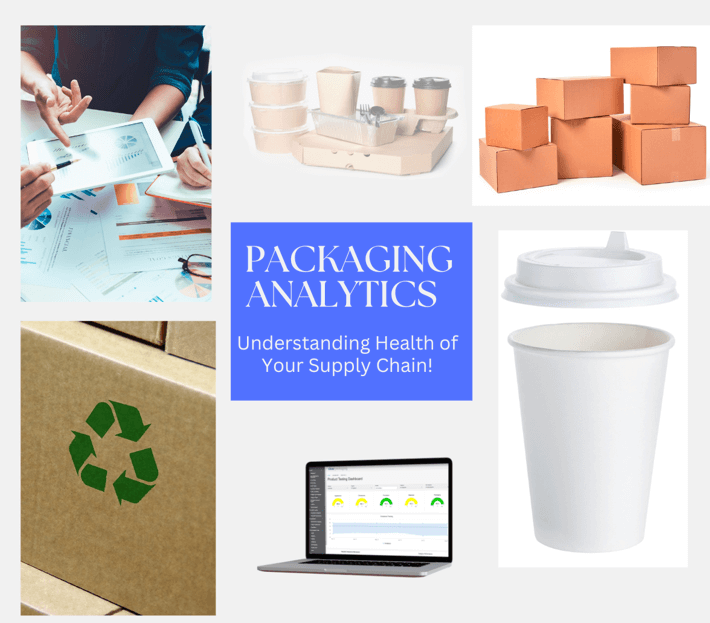A routine testing program for packaging allows brands and their suppliers to meet specifications consistently, avoid significant non-conformances that impact their customers, and reduce waste for a more sustainable environment. Brands and suppliers across various industries are investing more and more in a fully developed packaging program. Consumers have many choices today, and being reactive to packaging challenges vs taking a proactive stance can eliminate you from the competition.
Development of Good Specifications Across Packaging Supply Chain
Specifications development plays a crucial role in ensuring the smooth functioning of the packaging supply chain. By establishing clear and detailed specifications for packaging materials and products, brands can maintain consistency and quality. These specifications serve as guidelines for suppliers, ensuring that they meet the required standards and deliver products that meet customer expectations. Specifications development enables better communication and collaboration between brands and suppliers. It allows both parties to have a clear understanding of the requirements and expectations, reducing the risk of misunderstandings and non-compliances.
A routine testing program for packaging products and raw materials allows for a vast amount of data to be collected. Utilizing a laboratory setting results in accurate and unbiased data, a very effective platform for specification development, modifications, and overall consistency.
With well-defined specifications, brands can establish strong partnerships with their suppliers, leading to improved efficiency and productivity in the supply chain.
Opportunities to Reduce Waste and Make Improvements
Routine testing provides brands with opportunities to reduce waste and make improvements in their packaging processes. By analyzing the testing results, brands can identify areas where waste occurs and implement measures to minimize it. This includes optimizing packaging materials usage, improving packaging design, and streamlining packaging operations.
Additionally, routine testing helps brands identify opportunities for making improvements in their packaging products. By analyzing the performance, appearance, and formation of their packaging, brands can identify areas for enhancement. This may include improving product protection, enhancing shelf appeal, or optimizing the overall user experience. By continuously striving for improvement, brands can stay ahead of the competition and meet evolving customer demands.
Benefits of Routine Testing in Ensuring Specifications Compliance
Routine testing of packaging is essential to ensure compliance with the established specifications. By conducting regular tests, brands can verify whether the packaging materials and products meet the required standards and perform as expected. This helps to identify any deviations or non-compliances early on, preventing major problems in the supply chain.
Utilizing Data Analytics to Minimize Problems and Identify Trends
Data analytics plays a crucial role in minimizing problems and identifying trends in the packaging supply chain. By analyzing the data obtained from routine testing, brands can identify patterns, anomalies, and potential areas of improvement. This allows them to take proactive measures to address issues and optimize their packaging processes. Recording non-conformances helps analyze negative trends and allows brands and suppliers to be proactive by preventing the same event from occurring again.
Data analytics enables brands to make data-driven decisions and implement effective strategies. By leveraging the insights gained from routine testing results obtained in a laboratory setting, brands can identify opportunities for cost reduction, waste reduction, and process optimization. This leads to improved efficiency, increased customer satisfaction and loyalty, and enhanced competitiveness in the supply chain.
The Importance of Actionable Insights for Packaging Decisions
Actionable insights derived from routine testing are crucial for making informed packaging decisions. Brands and packaging teams need reliable and relevant data to make effective choices regarding their packaging products. The cloud-based portal provided by Clear Packaging offers a convenient and accessible platform for viewing testing results.
By having testing results displayed in dashboards, charts, and reports, brands can easily interpret and analyze the data. This enables them to identify areas that require attention, make informed decisions, and take appropriate actions. Actionable insights help brands optimize their packaging strategies, enhance product quality, and meet customer expectations.
In conclusion, routine testing of packaging plays a vital role in ensuring the performance of the supply chain. An effective ROUTINE PRODUCT TESTING PROGRAM through Clear Packaging allows brands to meet specifications and avoid major non-compliances. Taking a proactive approach to your packaging program can reduce waste, cut costs associated with on-going issues, and allow for continuous improvements in your packaging processes and products!
